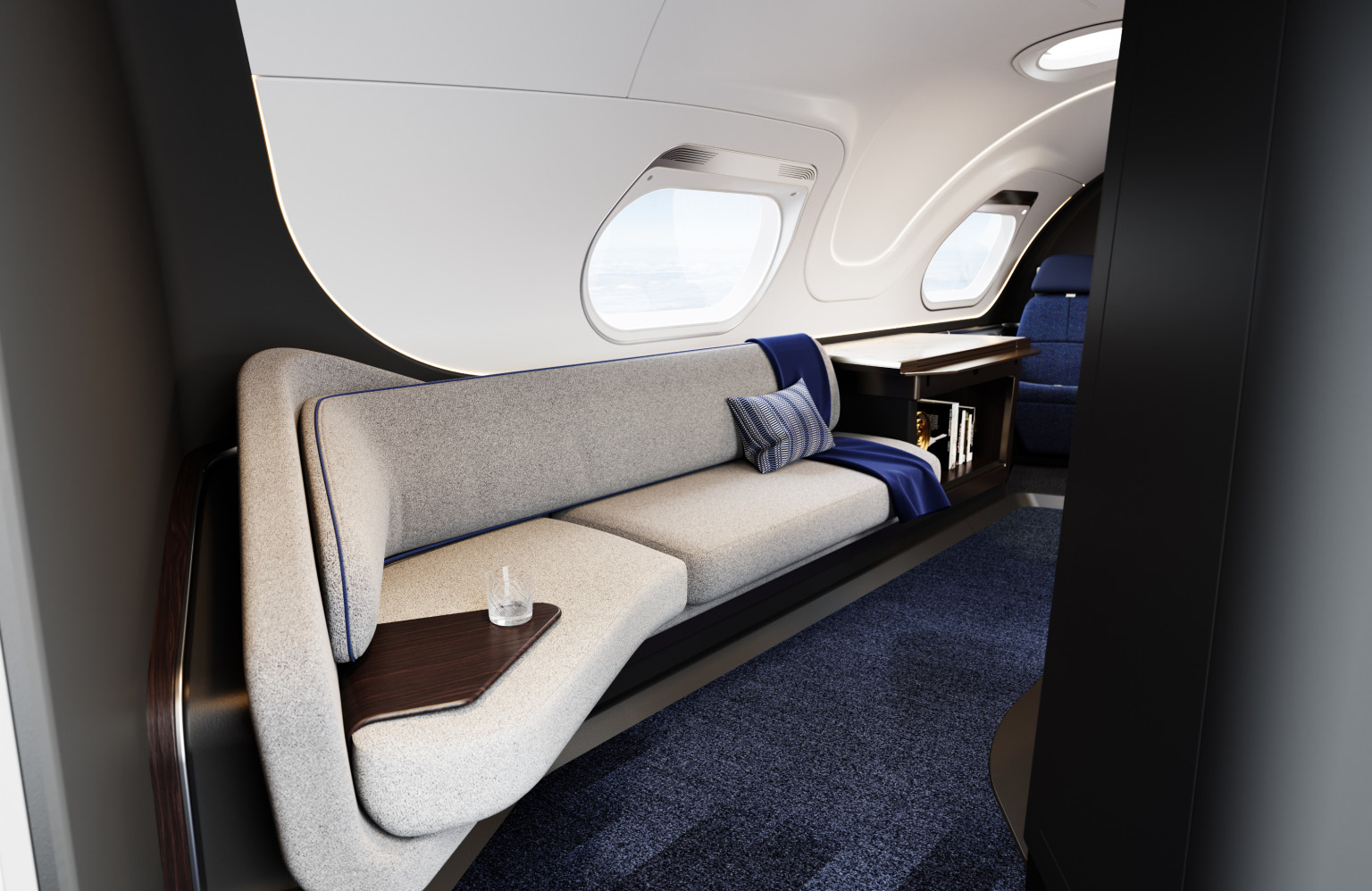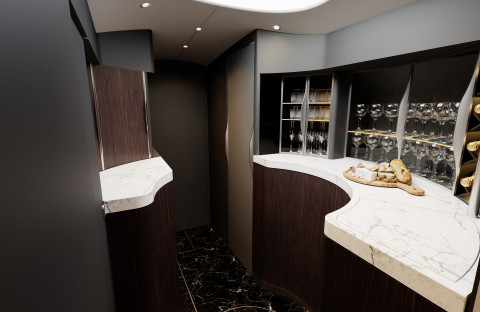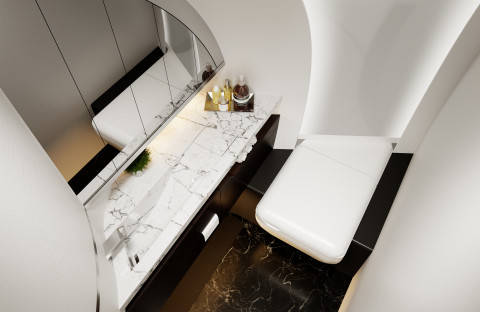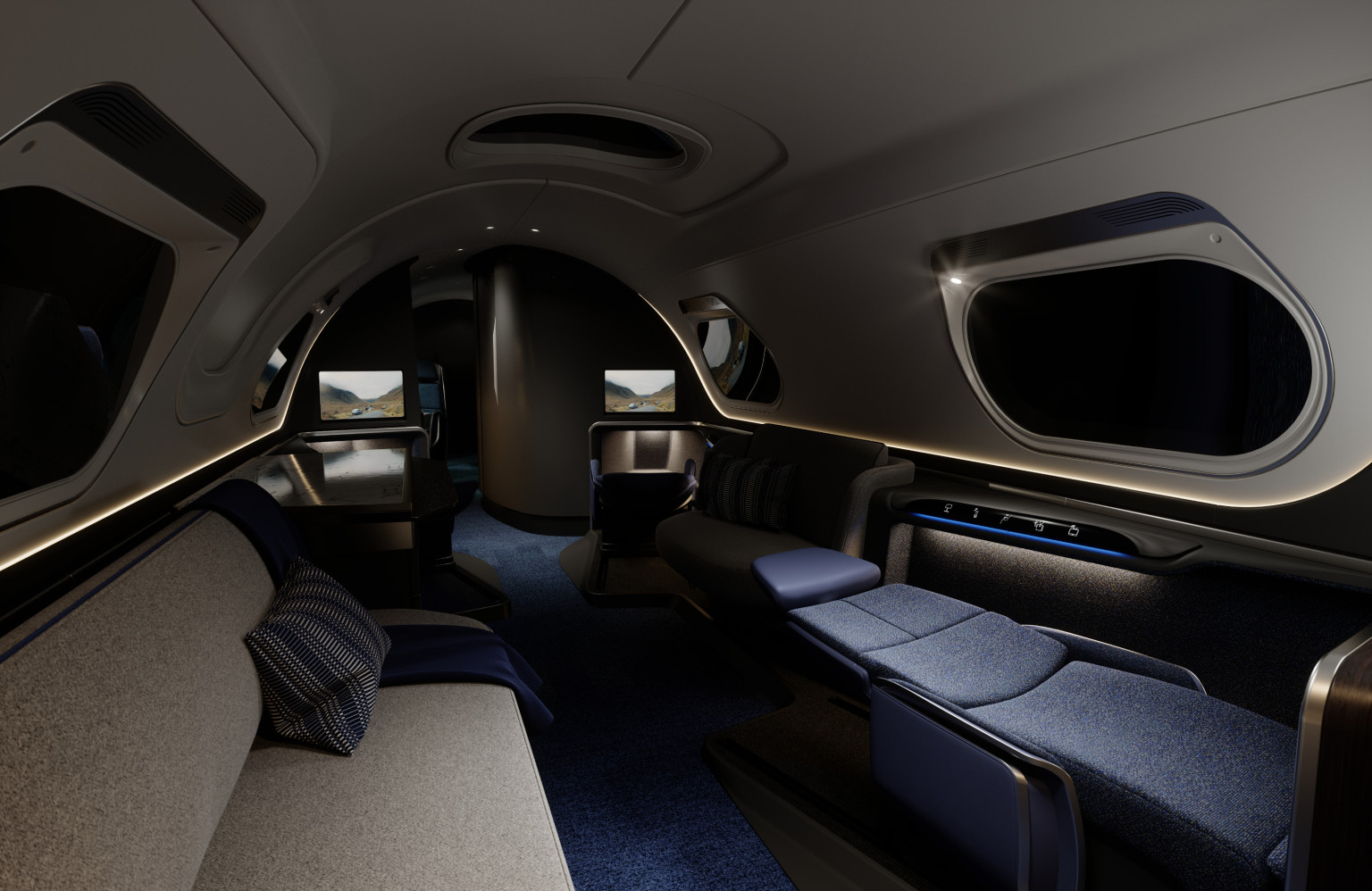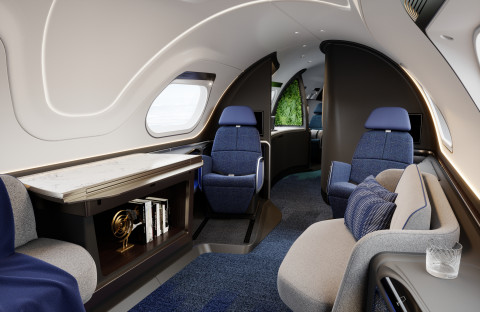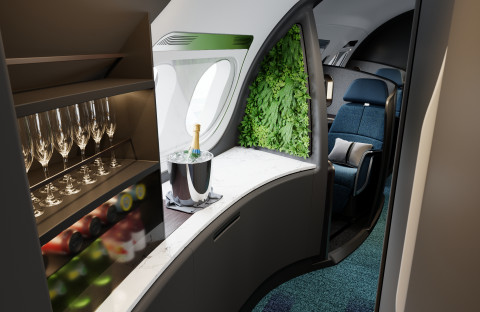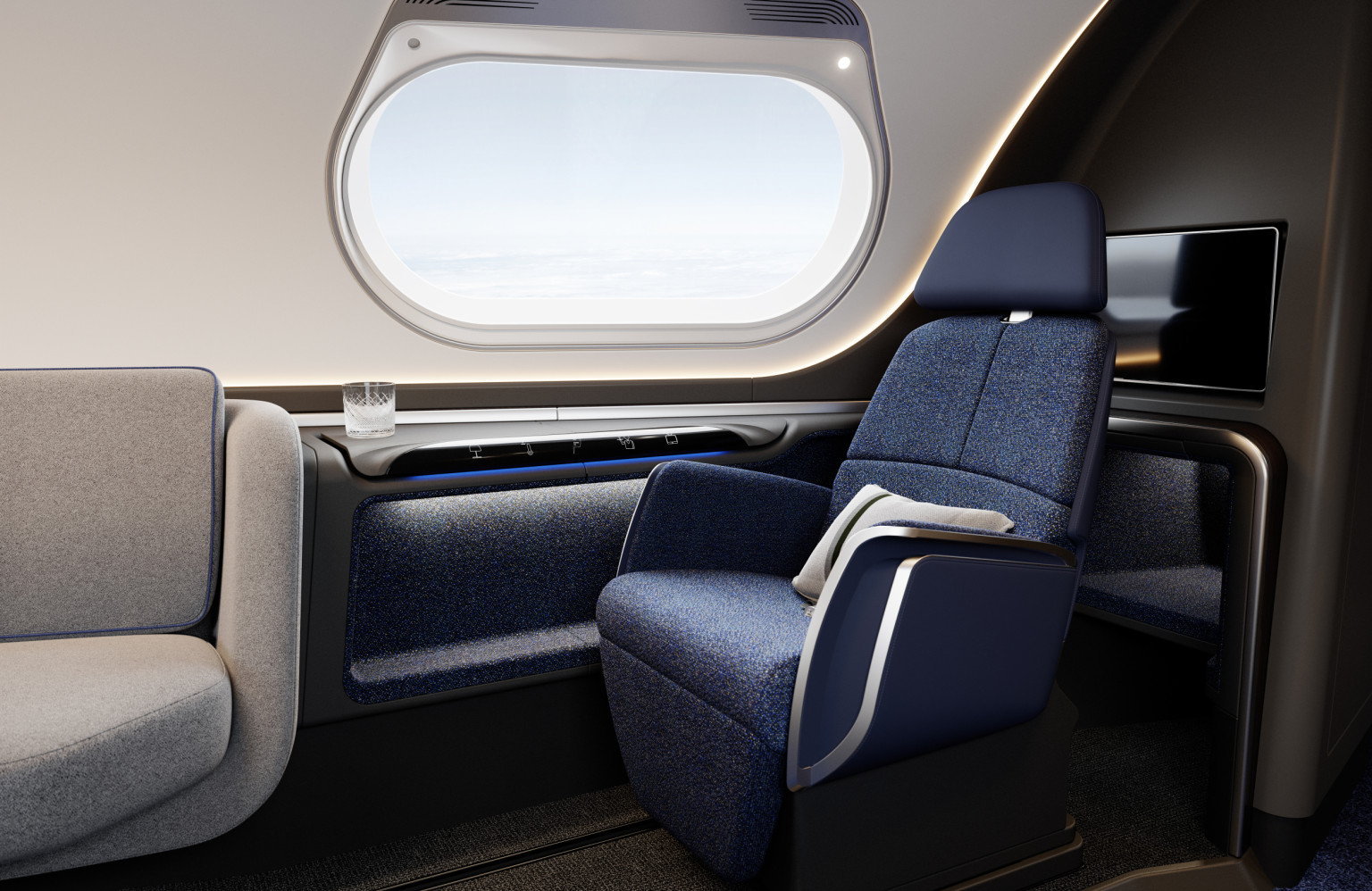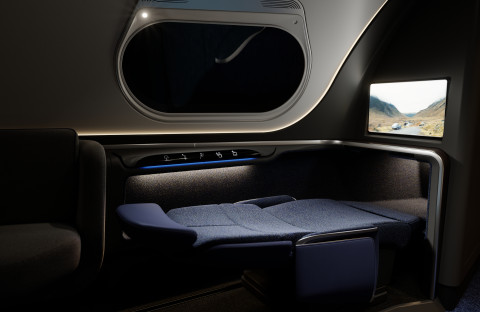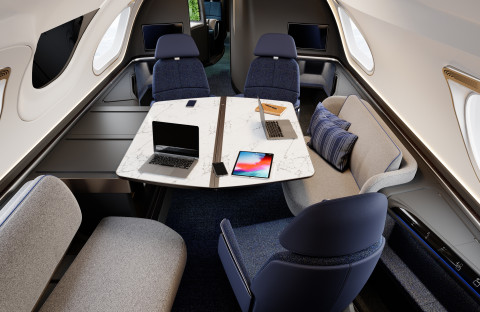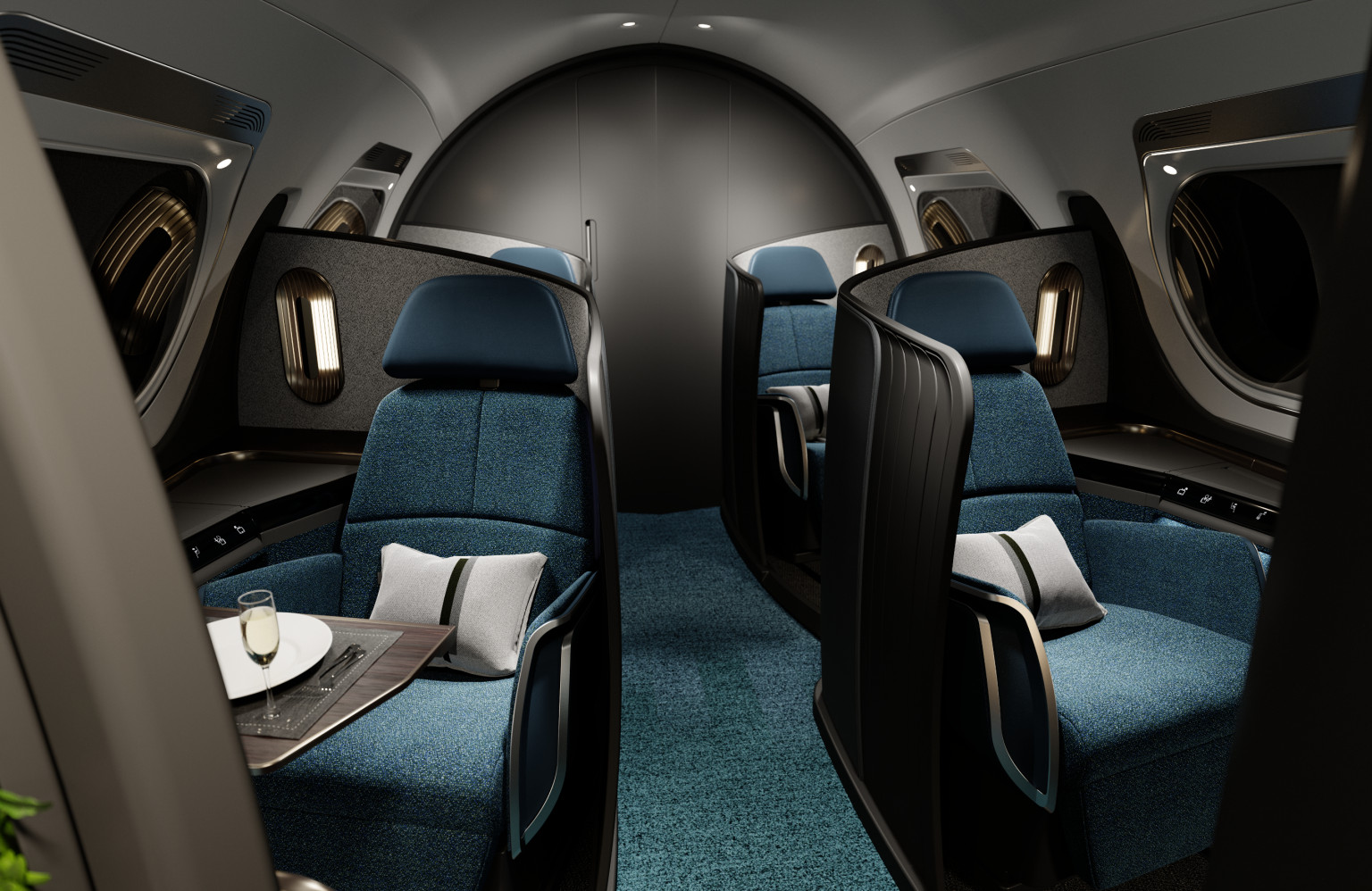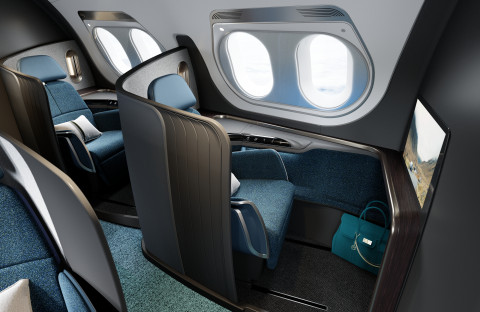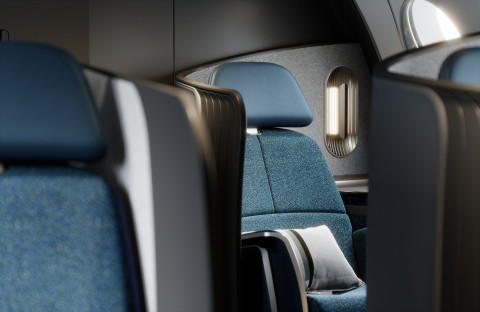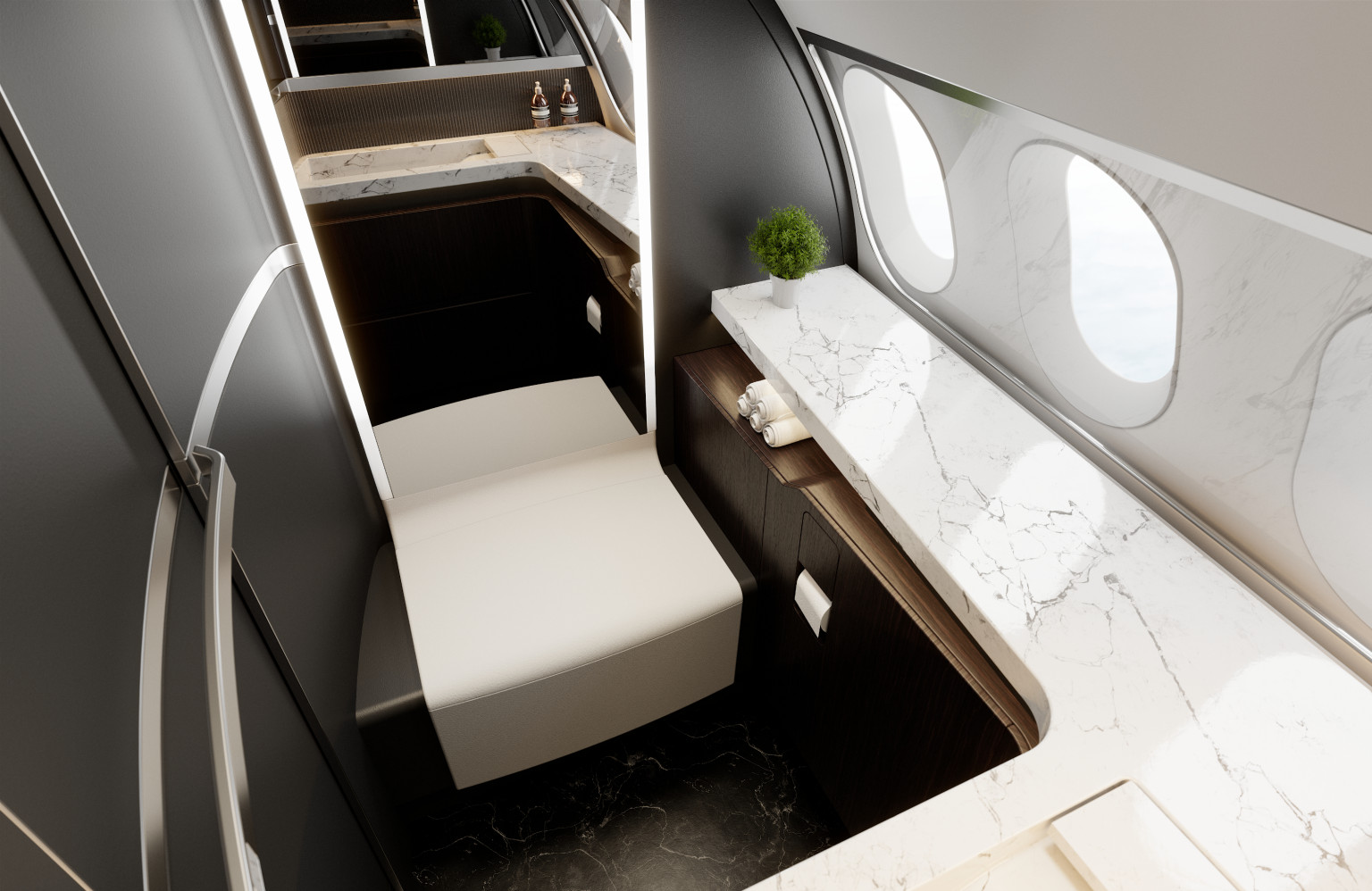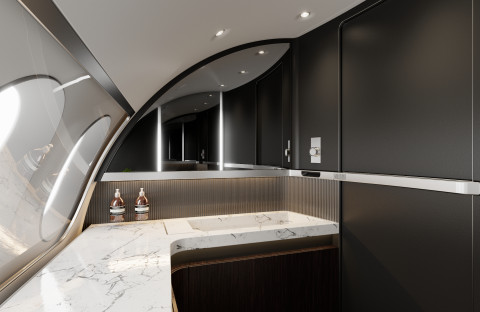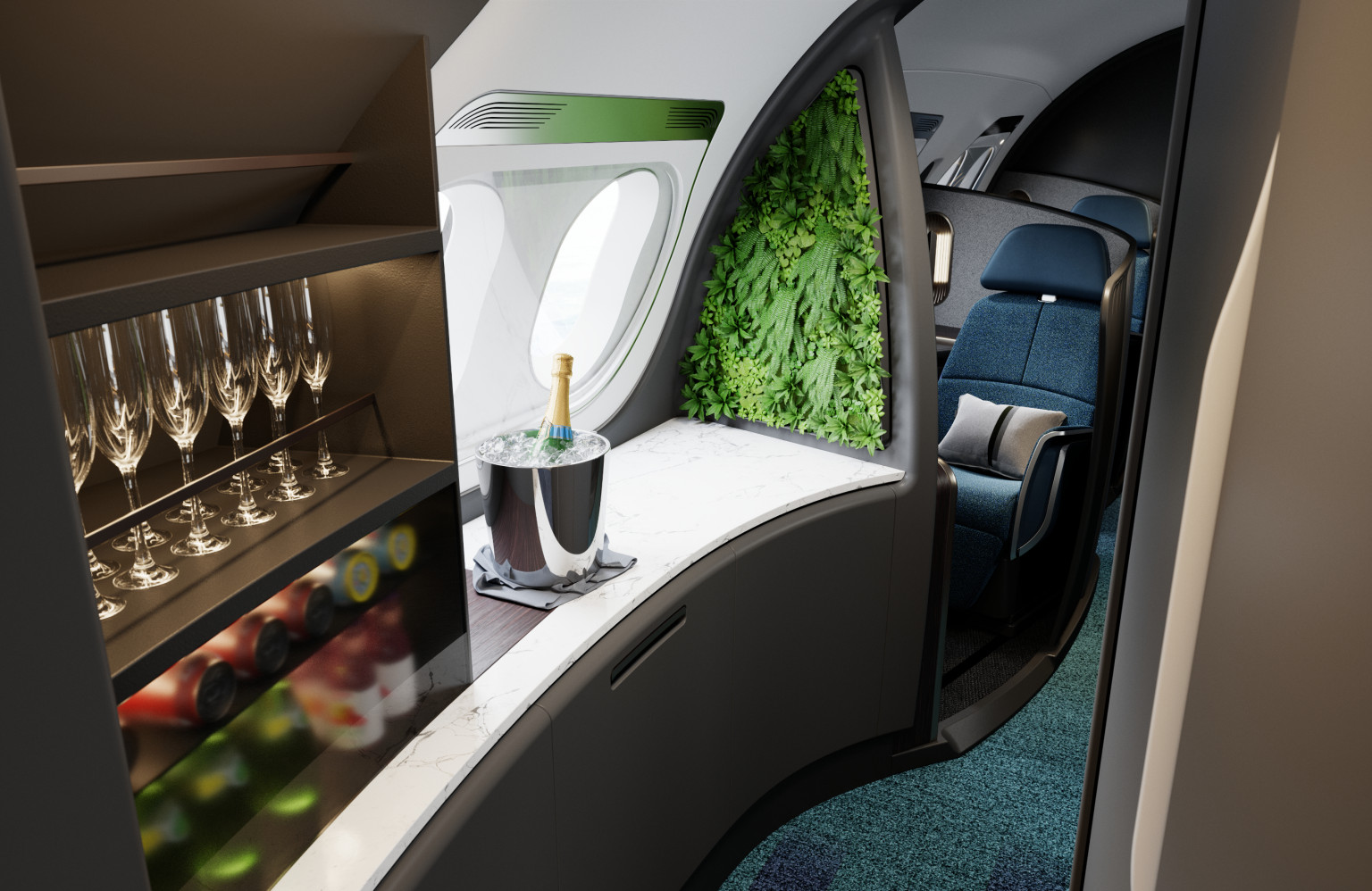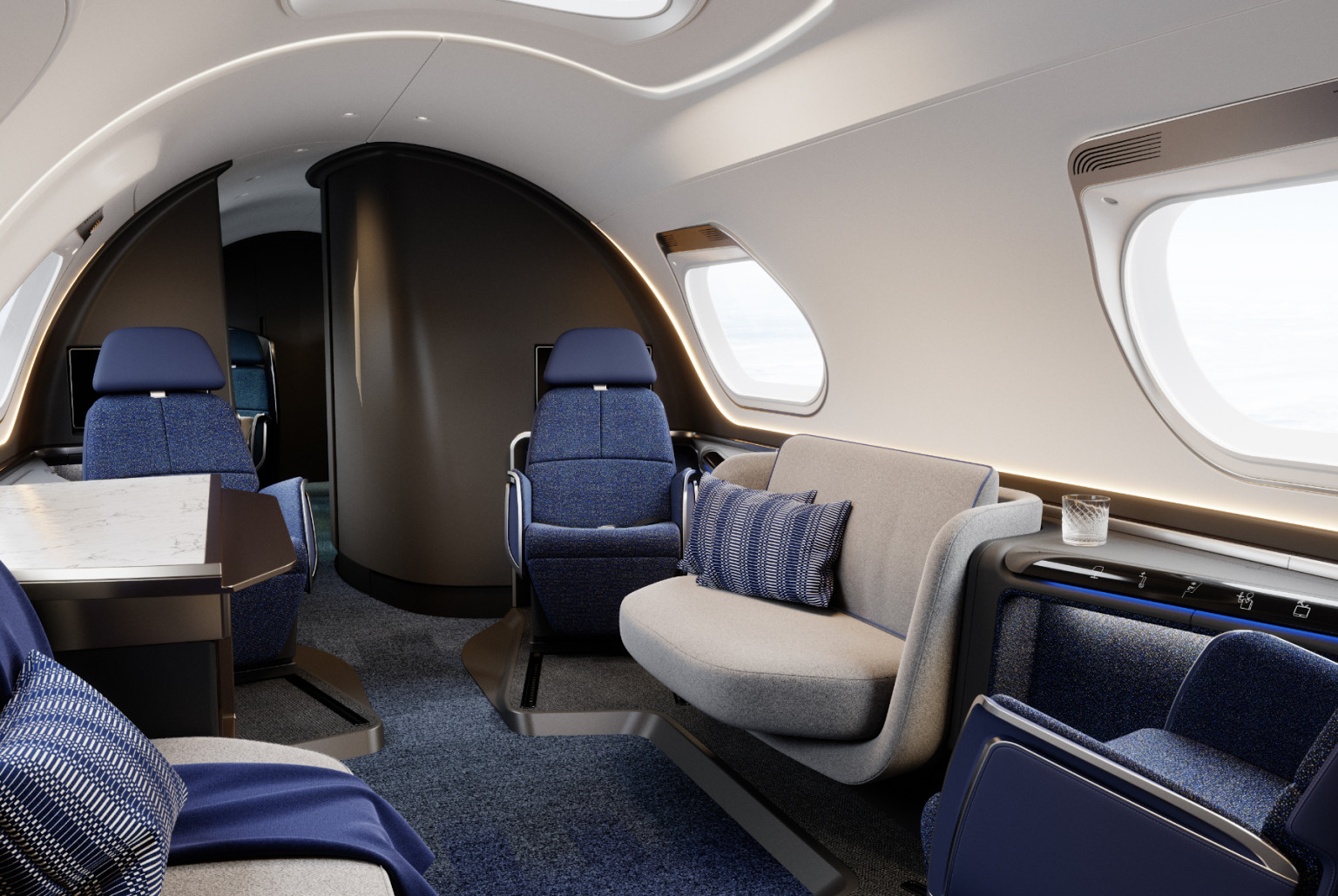
Clean Sky ll
Transformative Innovation in Business Jet Design
Acumen was extended an invitation to join a prestigious consortium of eleven partners which included aerospace and research specialists participating in the 'Clean Sky II project.' This landmark initiative, called CASTLE (CABIN SYSTEMS DESIGN TOWARD PASSENGER WELLBEING) spearheaded by the European Union's Horizon 2020 program ran from 2014-2024. The project aimed to push the boundaries of technology, specifically focusing on reducing CO2 emissions and noise from aircraft. Acumen's role within this consortium was to contribute ground-breaking insights and design an 'office-centred business jet,' a project that would redefine the trajectory of sustainable aviation.
Client
Year
Project background
Greener travel and passenger efficiency
Clean Sky II presented an unparalleled opportunity for Acumen to showcase its commitment to innovation within the commercial aviation sector and translate this to Business jets. At the project’s inception, a comprehensive state-of-the-art research phase unfolded, unravelling key insights and identifying shortcomings in existing large cabin jets. This initial exploration laid the foundation for a multitude of designs and concepts that aimed to answer the pivotal questions of ‘how can a business jet interior promote greener travel?’ and ‘how could technical advancements enhance passengers’ efficiency?’
Acumen’s unique focus within the consortium was on elevating the user experience onboard. Taking a holistic approach to cabin interior design, our team honed in on operational efficiency for the crew and the overall well-being of passengers. Challenging conventional business jet interiors, we set out to redefine what efficiency looked like for both parties, placing particular emphasis on accessibility and ergonomics, given the inherent spatial constraints of Business Jets compared to commercial aircraft.
Leveraging our expertise from the commercial sector, Acumen crafted an interior that placed customers and crew at the forefront of the experience. The design featured clearly defined zones for relaxation, work, sleep, food & beverage preparation, as well as social and private spaces.
Navigating the Clean Sky II landscape
Sustainable material selection and weight reduction
Clean Sky II, as the leading protagonist in Europe’s aeronautical research and innovation, champions the air transport needs of an increasingly mobile and growing population. Acting as a hub for diverse players across Europe, it draws in giants of the aero-industrial community, SMEs, research establishments, regulatory bodies, and academia. This collaborative effort, facilitated through a public-private partnership, focuses on the design, demonstration and validation of novel technologies.
While advancements in more sustainable material selection and weight reduction were central to the ‘Green Challenge,’ Acumen recognized that reimagining the business jet cabin interior was equally crucial. Beyond the project’s initial scope, we delved into the fundamental compromises present in current business jet layouts.
Identifying challenges and opportunities
Privacy and accessibilty
Acumen’s commercial aviation experience proved invaluable in identifying challenges and positioned us uniquely to create a cabin concept that would challenge the status quo. As commercial aviation intricacies extend to business aviation, challenges related to the conversion of individual seating to beds and accessibility issues in particular for people with reduced mobility (PRM) remain a common thread.
Acumen’s opportunities analysis highlighted the need for a premium and seamless boarding experience capable of freeing PRM passengers’ circulation and crew members’ operations from the physical constraints associated to the narrow conventional doorways entry ways.
Another critical insight involved the use of lavatories in-flight. Typically positioned at the back of the aircraft, narrow doors made it challenging for PRM passengers, and the presence of divan sofas often rendered the toilet door inoperable when converted into a bed.
In addition, the use of two single seats to create a single bed not only reduced overall capacity but also introduced challenges in stowage capacity due to large inflatable bed infills.
Privacy concerns during work or sleep were yet another issue, as passengers facing each other often couldn’t fully utilize their seats without intruding on others.
Charting the course for change
A highly customizable business jet interior
Armed with a deep understanding of these challenges, Acumen approached the design of the aircraft from a clean slate, challenging the fundamental architecture of traditional Business Jet interiors. The vision was encapsulated in the phrase “Heightened Living – Journeys Without Compromise.”
A pivotal change involved repositioning the aircraft entrance door further aft of the galley area. This allowed the creation of a dedicated workspace, crew rest, and secondary lavatory that could be closed off from the main cabin. Beyond practical benefits, this repositioning enhanced the sightline, providing a spacious welcome experience and leaving a lasting ‘WOW’ impression for all passengers.
To further optimize the interior, the main lavatory was strategically positioned midcabin, effectively dividing the space into two modular zones. Acumen’s design team crafted six different interchangeable modules, including galley, formal group, lounge, conference, private pods, and a master suite. These modules could be arranged in 15 different configurations, creating a highly customizable business jet interior.
Innovation in action
Transcending traditional boundaries
To meet the ‘Office-Centred Business Jet’ criteria outlined in the Clean Sky II brief, Acumen established an innovative set of design criteria. This systematic approach allowed us to objectively assess and determine the most appropriate layout for development.
The result was a main cabin that transcended traditional boundaries, offering accessibility, warmth, brightness, and a welcoming atmosphere. Featuring a large sofa, socially arranged seats, expansive windows, and a central roof light/lighting feature, the cabin transformed seamlessly into a meeting space for up to six passengers or individual workspaces. Notably, the individual seats could rotate to face personal monitors, tables, and storage, effortlessly transitioning into beds without displacing other passengers or relying on cumbersome inflatable infills. The main lavatory, positioned for accessibility and privacy, doubled as an emergency exits and life raft area, with a secondary mini bar for passenger convenience. A living wall brought natural elements back into the cabin, enhancing the overall in-flight experience. To address privacy concerns, a private section at the rear of the aircraft was created. Four individual seat places with enhanced privacy, personal tables, monitors, lights, and storage offered a premium experience. These private pods seamlessly converted into full lay-flat beds without affecting other passengers or the overall seat count.
Throughout the program, Acumen rigorously analyzed every area of the cabin, from the galley to passenger spaces, using virtual reality and other software tools to evaluate ergonomics and psychological impacts. The feedback gathered from partners, combined with real participant testing using a full-size demonstrator, was instrumental in refining and evaluating the concept.
A greener future
A new era of more sustainable and efficient air travel
The culmination of Acumen’s efforts in the Clean Sky II initiative has not only questioned fundamental approaches to business jet interiors but has also maximized the efficiency of the aircraft cabin itself. This aligns seamlessly with other ongoing efforts in environmental impact reduction, weight savings, and eco-compliance within the realm of jet travel.
The innovative cabin interior concept promises an immediate and direct impact on the passenger experience. Whether it’s accessibility, working, sleeping, relaxing, or dining, the new design elevates every aspect of the journey. Crew members, too, reap the benefits with dedicated ergonomically designed spaces, improved rest areas, enhanced privacy, and optimized access and flow around the aircraft for a superior working experience.
The Clean Sky II’s vision for a cleaner future in business jet design extends beyond immediate impact. The insights and learnings gained from this project serve as a beacon, inspiring the industry toward a new era of more sustainable and efficient air travel. Our commitment to shaping the future of aviation, evident in this revolutionary concept, is a testament to Acumen’s dedication to pushing boundaries and redefining what’s possible in aircraft design. As we look ahead, we envision a future where business jet travel is not only luxurious but also environmentally conscious, setting new standards for excellence in the aviation industry.
Clean Sky II Partner Members
Project Coordinator – Geven (Italy)
- Acumen Design Associate LTD (UK)
- Invent GMBH (Germany)
- PGA electronics (France)
- Siemens Industry software NV (Belgium)
- Noesis (Belgium)
- DEMA (Italy)
- CIRA Italian Aerospace Research Center (Italy)
- UNINA: University of Naples Federico II (Italy)
- UNIBO: University of Bologna (Italy)
- POLITO: Politecnico di Torino (Italy)


